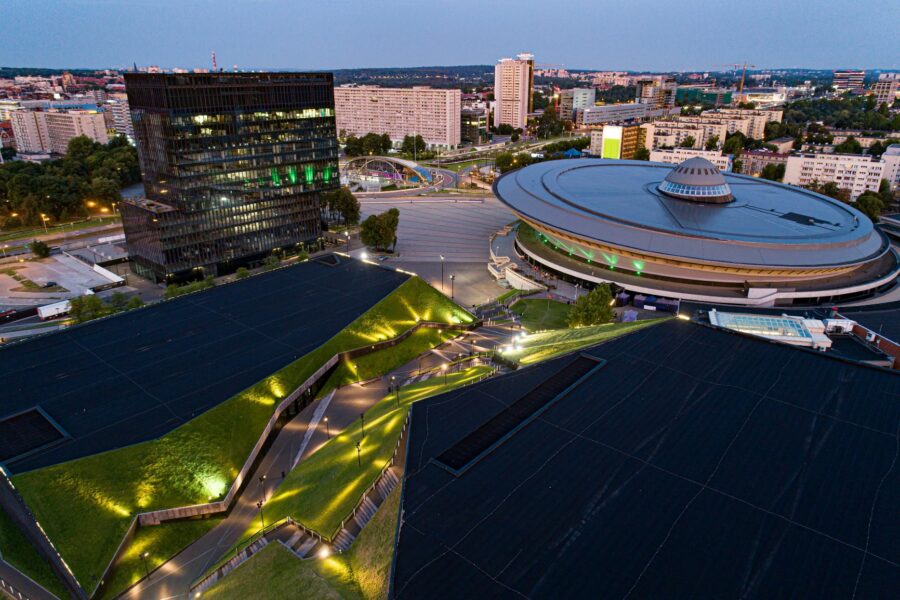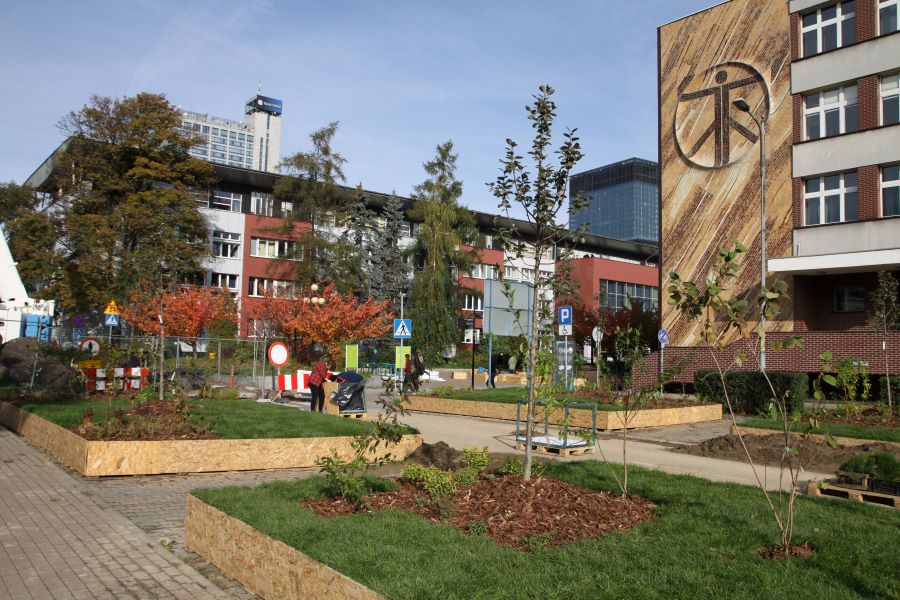Katowice | fot. materiały Uniwersytetu Śląskiego
Śląskie uczelnie wspólnie diagnozują swój potencjał i prowadzą analizę możliwości jego wykorzystania. Inicjatywa prowadzona od października 2022 roku nawiązuje bezpośrednio do realizowanej wcześniej współpracy siedmiu uczelni, które mają swoją siedzibę w mieście, a dzięki której Katowice otrzymały tytuł Europejskiego Miasta Nauki na 2024 rok (EMN 2024).
Do końca stycznia 2023 roku trwało pozyskiwanie danych – ich analiza ma przyczynić się między innymi do uruchomienia w mieście Zielonej Strefy Nauki wraz z Sieciowym Centrum Nauki. Zbierane są również dane w zakresie działalności naukowej, dydaktyki, promocji, komunikacji, popularyzacji nauki oraz procesów zarządczych.
Kto bierze udział w projekcie?
Potencjał uczelni, tworzących Konsorcjum Akademickie Katowice Miasto Nauki, analizowany jest w ramach projektu „Wspieranie procesów konsolidacji uczelni” (umowa grantowa nr MEiN/2022/DIR/1761). W projekcie biorą udział:
- Uniwersytet Śląski w Katowicach,
- Politechnika Śląska,
- Śląski Uniwersytet Medyczny w Katowicach,
- Uniwersytet Ekonomiczny w Katowicach,
- Akademia Wychowania Fizycznego im. J. Kukuczki w Katowicach,
- Akademia Sztuk Pięknych w Katowicach,
- Akademia Muzyczna im. K. Szymanowskiego w Katowicach.
Badanie potencjału uczelni, realizowane przez zespoły projektowe, pozwoli na:
- zwiększenie wpływu społecznego nauki oraz poziomu umiędzynarodowienia (zespół nr 1 – doskonałość badawcza),
- opracowanie planu wspólnych działań dydaktycznych (zespół nr 2 – doskonałość dydaktyczna),
- określenie potencjału popularyzacyjnego, komunikacyjnego, a także zaplanowanie działań związanych z obchodami Europejskiego Miasta Nauki 2024 (zespół nr 3 – społeczna odpowiedzialność uczelni i akademicki wizerunek Katowic),
- opracowanie koncepcji wspólnej Zielonej Strefy Nauki oraz Sieciowego Centrum Nauki (zespół nr 4 – strefa nauki),
- przeprowadzenie działań analitycznych w zakresie synergii uczelni (zespół nr 5 – analityka i inne efekty synergii).
Upowszechnianie i popularyzacja nauki
Zespoły robocze przeanalizują dane o realizowanych aktywnościach w zakresie upowszechniania i popularyzacji nauki. Zgromadzone zostaną również informacje dotyczące unikalnej oferty naukowo-dydaktycznej, która wyróżnia członków konsorcjum. Informacje te zostaną uzupełnione o dane projektów citizen science. Całość przeanalizują specjaliści w zakresie komunikacji naukowej tak, aby stworzyć wyjątkową propozycję programu Europejskiego Miasta Nauki 2024. Efekty działań pozwolą również na opracowanie katalogu dobrych praktyk komunikacyjnych, które pozwolą na ich wykorzystanie w uczelniach konsorcjum.
W 2022 roku w pobliżu katowickiego kampusu UŚ prowadzono działania, których celem było przekształcenie okolicy doliny Rawy w miejsce bardziej przyjazne i atrakcyjne dla członków społeczności akademickiej oraz mieszkańców Katowic | fot. Katarzyna Stołpiec
Zielona Strefa Nauki i Sieciowe Centrum Nauki – działania kluczowe dla EMN 2024
Działania konsolidacyjne przyniosą zmiany w przestrzeni publicznej goszczącej katowickie uczelnie. Osią planowanej Zielonej Strefy Nauki będzie zrewitalizowana i przywrócona do stanu naturalnego Rawa. Przestrzeń ta połączy kampusy uczelni, spełniając potrzeby odbiorców w zakresie spędzania czasu wolnego i kontaktu z nauką i naturą. Obecnie prowadzone są prace, których efektem będą pierwsze wizualizacje i koncepcje zmian przestrzeni nad Rawą.
Zespół konsolidacyjny odpowiedzialny za to działanie analizuje potrzeby przyszłych użytkowników Strefy oraz przygląda się propozycjom zagospodarowania terenu. Doświadczenie zebrane dzięki pracom pozwoli również na opracowanie zasad projektowania przestrzeni publicznych w kampusach uczelni konsorcjum. Planowane są również analizy i badania ankietowe użytkowników przestrzeni – studentów, doktorantów oraz pracowników.
Ze Strefą połączone będzie Sieciowe Centrum Nauki (SCN) – widzimy je jako współpracujące ze sobą elementy infrastruktury uczelni konsorcjum (budynki, infrastruktura badawcza, instalacje, wystawy, itp.). Elementy Centrum zapewnią możliwość kontaktu odbiorców z efektami pracy naukowców, mają również pozwolić na obserwację ich pracy. Odwiedzający będą mogli zadawać pytania, inspirując przy tym dalsze prowadzenie badań (zgodnie z ideą inicjowania działań badawczych typu bottom-up).
Możliwy będzie tu również udział w badaniach citizen science. Elementy składowe SCN zostaną zrealizowane w oparciu o założenia dublińskiego Science Gallery (m.in. zmienność ekspozycji, oparcie ekspozycji o nowoczesne metody popularyzacji nauki, realizację koncepcji science&art). Oferta programowa SCN również będzie zbudowana w oparciu o potencjał wszystkich uczelni konsorcjum – charakter tej unikalnej na skalę światową sieci będzie zależny od wyników badań i analiz realizowanych w projekcie we współpracy z krajowymi i zagranicznymi ekspertami w zakresie science communication.
W projekcie prowadzone są analizy mające na celu ocenę potencjału uczelni w zakresie realizowanych działań naukowych i dydaktycznych oraz potencjalnego uwspólnienia wybranych procesów zarządczych. Zebrane w ten sposób dane przyczynią się do pełniejszego zrozumienia pozycji śląskiej nauki na arenie krajowej i międzynarodowej. Chcemy również, aby wyniki analiz stały się inspiracją do dyskusji o możliwości wymiany dobrych praktyk pomiędzy uczelniami.







